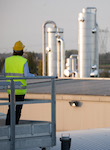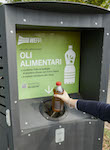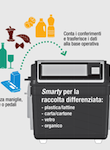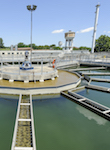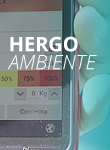Ferrara, the city of "green" heat
Focus
Focus
Category Facet
Custom Facet
Search Results
-
Web Content Article · written-by Mario Egidio on-date May 26, 2024 12:29 PM
Categoria Progetto: Energy Efficiency Innovation Heratech Project Circular Economy Water Project -
Web Content Article · written-by LUCIA ALGISI on-date Nov 29, 2023 12:21 PM
The pilot project involving the installation of Kamstrup meters was carried out in Conselice, near Ravenna, and yielded excellent results. The tests now continue in Modena, covering a larger area
Categoria Progetto: Water Project Innovation -
Web Content Article · written-by LUCIA ALGISI on-date Nov 29, 2023 2:30 PM
Early warning system with innovative FingerPrint technology to ensure safe water
Categoria Progetto: Water Project Innovation -
Web Content Article · written-by LUCIA ALGISI on-date Nov 29, 2023 2:35 PM
Discover the project for “removing and capturing” microcontaminants with recycled materials
Categoria Progetto: Water Project Innovation -
Web Content Article · written-by LUCIA ALGISI on-date Nov 29, 2023 12:05 PM
Hera continues experimentation of the innovative, fast and low-cost contactless system that uses space technology to detect water leaks in the network more quickly and productively
cosmicrays Categoria Progetto: Water Project Innovation -
Web Content Article on-date Aug 4, 2020 5:20 PM
District heating is already in itself a "sustainable" and environment-friendly solution, because it can guarantee better performance than traditional domestic boilers. In addition, the plant...
Categoria Progetto: Heratech Project Energy Efficiency -
Web Content Article on-date Aug 4, 2020 5:12 PM
Since 2017, we have been developing a measuring system, conceived by Hera Luce, which analyses the materials used in public lighting. What's the target? Making their life cycle circular, as well.
Categoria Progetto: Energy Efficiency Circular Economy -
Web Content Article on-date Aug 4, 2020 5:08 PM
Producing electricity and heat from non-reusable waste. How? In a waste-to-energy plant: it's a safe and legally compliant plant and an energy resource for the local area.
Categoria Progetto: Energy Efficiency Circular Economy -
Web Content Article · written-by LUCIA ALGISI on-date Aug 4, 2020 4:49 PM
By 2024, Rimini's beaches will be 100% fit for swimming thanks to the Rimini Optimised Seawater Protection Plan (Piano di Salvaguardia della Balneazione Ottimizzato - PSBO). Discover the most...
psbo Categoria Progetto: Heratech Project Circular Economy Water Project -
Web Content Article on-date Aug 4, 2020 4:26 PM
We monitor the sewerage networks from high up on the European Space Agency's satellites to prevent any damage and take preventive action. Modena and Bologna lead the pilot project. Find out more.
Categoria Progetto: Water Project Innovation -
Web Content Article on-date Aug 4, 2020 4:21 PM
What's Ferrara's green secret? It's underground, where a geothermal basin feeds its district heating system. The result? 87% of the thermal energy distributed in the city is "clean" and we avoid...
Categoria Progetto: Innovation Energy Efficiency Circular Economy -
Web Content Article on-date Aug 4, 2020 4:19 PM
The ultrasound hydrolysis system, installed in the Forlì treatment plant, makes the life cycle of wastewater sludge circular. The result: less sludge to dispose of, and more biogas produced.
circulareconomy Categoria Progetto: Circular Economy Water Project Innovation -
Web Content Article on-date Aug 4, 2020 4:07 PM
We have installed a turbo expander at the R&M stations of Ducati's factory in Bologna. The goal is to recover electricity from the decompression process of methane gas.
circulareconomy Categoria Progetto: Innovation Energy Efficiency -
Web Content Article on-date Aug 4, 2020 4:04 PM
Hera Group's drones are alternative and supplemental investigation tools to provide quality services to the areas we serve.
Categoria Progetto: Water Project Innovation -
Web Content Article on-date Aug 4, 2020 3:44 PM
Modena's smart purification plant is COSTANCE, the prototype of the purification plant of Granarolo dell'Emilia. Two outstanding examples of sustainable water resource management.
utility4.0 Categoria Progetto: Water Project Innovation
Asset Publisher
What's Ferrara's green secret? It's underground, where a geothermal basin feeds its district heating system. The result? 87% of the thermal energy distributed in the city is "clean" and we avoid about 22 thousand tonnes of CO 2 emissions.

A treasure is hiding under the soil of Ferrara. Not a chest full of gold coins nor a vault containing hidden works of art. It is a gift that nature gave this city. About two thousand metres under the Casaglia hamlet, there is a geothermal deposit from which water is drawn at around 100 °C. It is one of the world' s largest geothermal sources and a completely clean and renewable source of energy.
This natural treasure makes Ferrara's district heating one of the most advanced geothermal plants in Europe. This reservoir, in fact, supplies 43% of the thermal energy to a 160 km long network that serves about 25 thousand housing units. Thanks to geothermal energy, combined with the recovery of the heat generated by the Via Diana waste-to-energy plant, 87% of the heat we distribute in Ferrara is "green". This result is confirmed by the recent Carbon Footprint certification validated by SGS, according to which Hera district heating helps the city of Ferrara to save 22 thousand tonnes of CO2 emissions per year.
The Hera Group, partnered with Enel Green Power in a specially created temporary grouping of companies, has been managing this treasure trove of clean energy since the end of 2019. We began this process in 2017, when we obtained the concession to exploit the geothermal reservoir in the Ferrara subsoil, and we recently completed it by acquiring the Casaglia geothermal power plant. Thanks to this operation, we expect to increase the Ferrara district heating system's use of geothermal energy by a further 23% by 2023, compared to the 2016-2019 average.
In recent years, our strategy has had a single objective: to boost district heating in the city and create an advantage in both the residential and production markets. For example, under an agreement with the Municipality of Ferrara, customers who convert their systems, installing a district heating controller, already receive an 80% discount on the installation.
Search Bar
Tag Facet
Search Results
Asset Publisher

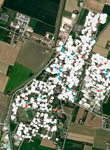
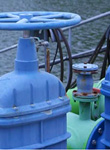
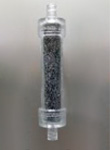




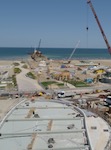



.jpg/468d051b-ba80-83a6-359d-7ef55eefd940)
.jpeg/1d0e0770-1094-b22b-fce4-099f27c72978)

